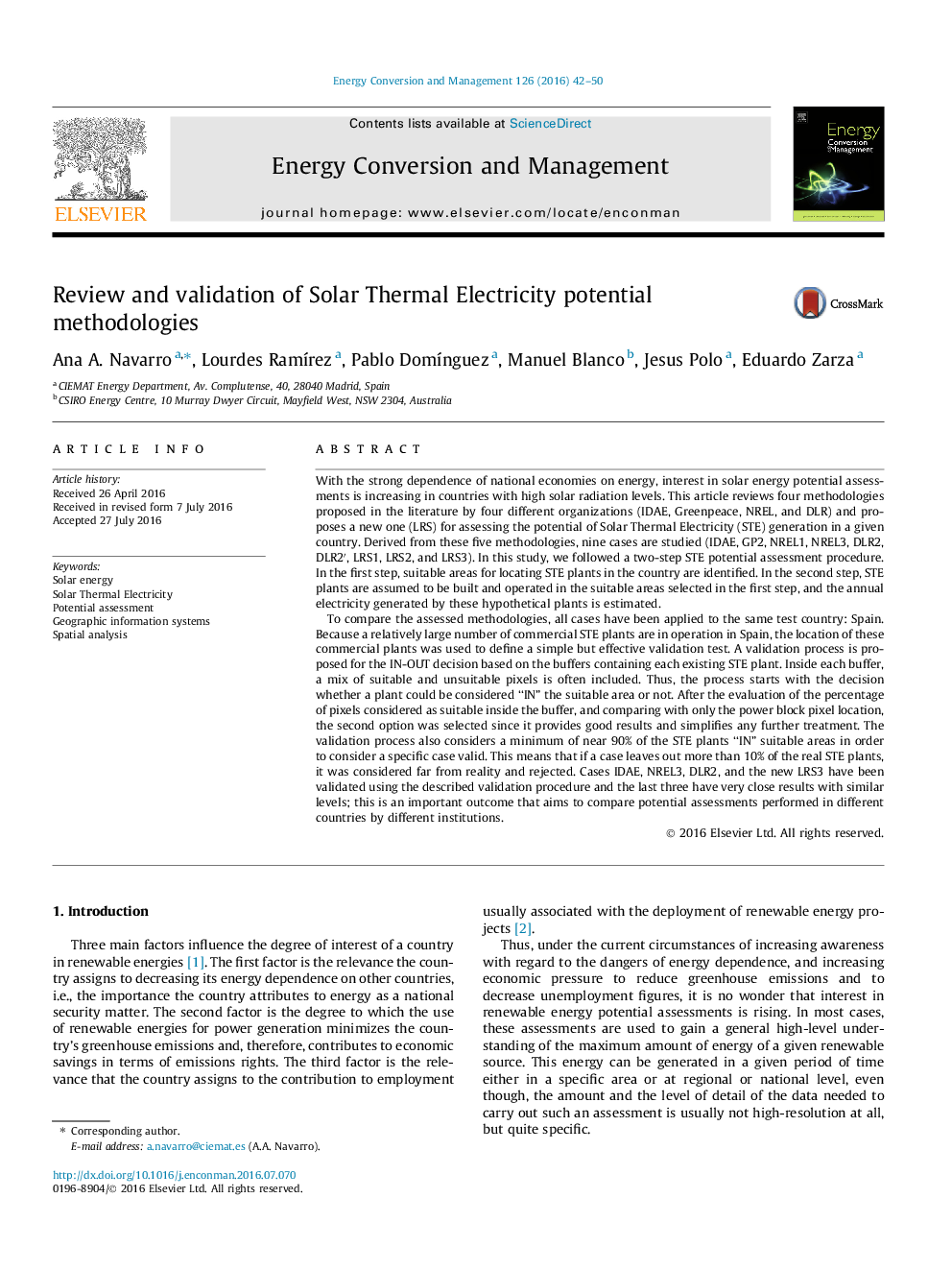| Article ID | Journal | Published Year | Pages | File Type |
|---|---|---|---|---|
| 7159880 | Energy Conversion and Management | 2016 | 9 Pages |
Abstract
To compare the assessed methodologies, all cases have been applied to the same test country: Spain. Because a relatively large number of commercial STE plants are in operation in Spain, the location of these commercial plants was used to define a simple but effective validation test. A validation process is proposed for the IN-OUT decision based on the buffers containing each existing STE plant. Inside each buffer, a mix of suitable and unsuitable pixels is often included. Thus, the process starts with the decision whether a plant could be considered “IN” the suitable area or not. After the evaluation of the percentage of pixels considered as suitable inside the buffer, and comparing with only the power block pixel location, the second option was selected since it provides good results and simplifies any further treatment. The validation process also considers a minimum of near 90% of the STE plants “IN” suitable areas in order to consider a specific case valid. This means that if a case leaves out more than 10% of the real STE plants, it was considered far from reality and rejected. Cases IDAE, NREL3, DLR2, and the new LRS3 have been validated using the described validation procedure and the last three have very close results with similar levels; this is an important outcome that aims to compare potential assessments performed in different countries by different institutions.
Keywords
Related Topics
Physical Sciences and Engineering
Energy
Energy (General)
Authors
Ana A. Navarro, Lourdes RamÃrez, Pablo DomÃnguez, Manuel Blanco, Jesus Polo, Eduardo Zarza,
